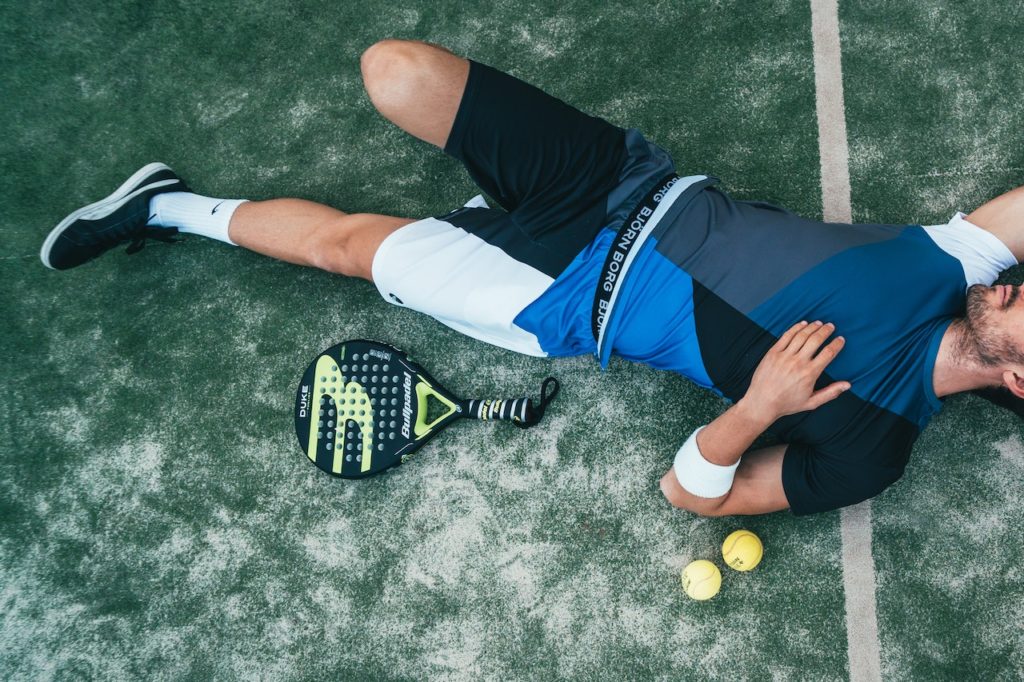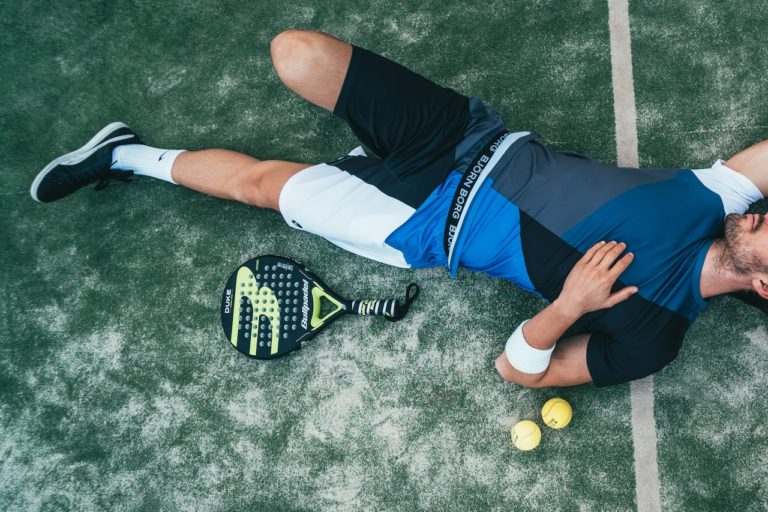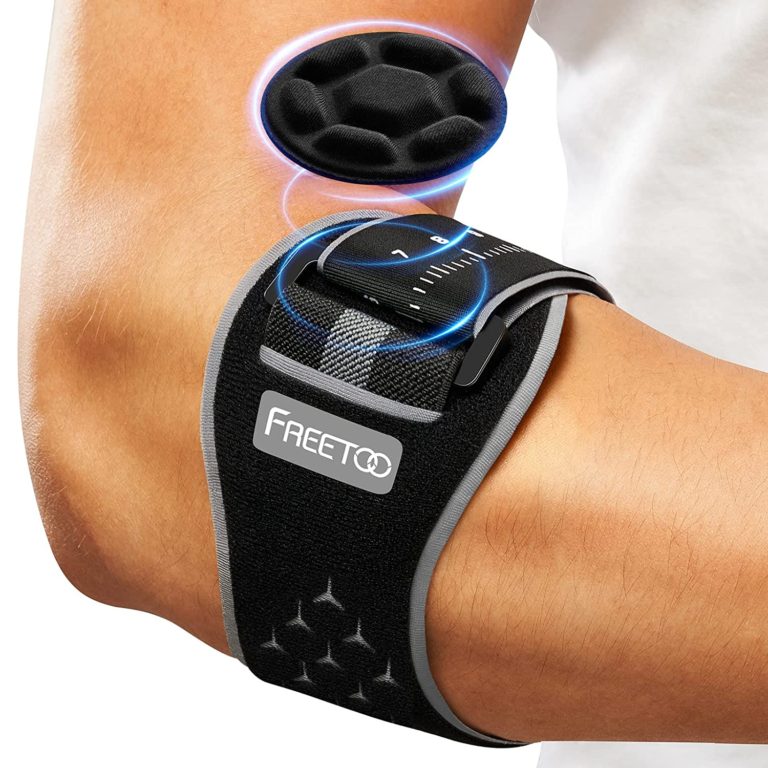If you’re an avid pickleball player, you may have experienced the nagging pain in your elbow that comes with repetitive swinging of the paddle. This common injury, known as pickleball elbow or lateral epicondylitis, can be frustrating and interfere with your game. However, with the right approach and treatment, you can heal and get back to playing without pain. In this article, we’ll discuss the causes of pickleball elbow, how to prevent it, and effective ways to cure it.
Understanding Pickleball Elbow
Pickleball elbow is an injury that affects the outer part of the elbow, where the forearm muscles attach to the bony bump on the elbow. This area is called the lateral epicondyle, hence the name lateral epicondylitis. The condition is caused by repetitive stress to the forearm muscles and tendons, leading to small tears and inflammation. Pickleball players are at risk of developing this injury due to the repetitive motions involved in swinging the paddle, particularly during backhand shots.
Deep Dive into Lateral Epicondyle
Lateral epicondylitis, commonly known as tennis elbow or in this case, pickleball elbow, is a condition that affects the outer part of the elbow. The lateral epicondyle is a bony bump on the outer part of the elbow where the forearm muscles attach. The condition is caused by repetitive stress on the forearm muscles and tendons that attach to the lateral epicondyle, leading to small tears and inflammation.
The forearm muscles that are most commonly affected in lateral epicondylitis are the extensor carpi radialis brevis and the extensor carpi radialis longus. These muscles are responsible for extending the wrist and fingers, as well as stabilizing the elbow during gripping activities. When these muscles are repeatedly stressed or overused, small tears can develop in the tendons that attach them to the lateral epicondyle. The resulting inflammation and pain can make it difficult to perform activities that require gripping or lifting.
The pain from lateral epicondylitis typically starts gradually and worsens over time. It is usually focused on the outer part of the elbow and may radiate down the forearm. The pain can be aggravated by activities that involve gripping or lifting, such as swinging a pickleball paddle. Over time, the pain may become more constant and severe, making it difficult to perform everyday tasks.
While pickleball elbow is a common injury among players, it can also affect non-athletes who perform repetitive motions in their daily work or activities, such as typing, painting, or gardening. It is important to address the underlying causes of lateral epicondylitis to prevent and treat the condition effectively. By understanding the mechanics of the injury and taking appropriate measures to prevent and treat it, individuals can minimize the impact of pickleball elbow on their daily lives.
Symptoms of Pickleball Elbow
The symptoms of pickleball elbow typically start gradually and worsen over time. You may experience the following:
Pain or tenderness on the outer part of the elbow
Weakness in the forearm
Stiffness in the elbow
Difficulty gripping or holding objects
If you experience these symptoms, it’s important to rest the elbow. Seek medical attention to prevent the injury from worsening.
Prevention Tips for Pickleball Elbow
Preventing pickleball elbow is possible with a few simple steps. Here are some tips to keep in mind:
Warm-up before playing: Take a few minutes to stretch and warm up your arm muscles before hitting the court.
Use proper technique: Focus on using proper technique when swinging your paddle, especially during backhand shots.
Choose the right paddle: Pick a paddle that is appropriate for your skill level and provides good grip and control.
Take breaks: Allow your arm muscles to rest between games or practice sessions.
Strengthen your forearm muscles: Engage in exercises that target your forearm muscles, such as wrist curls and reverse wrist curls.
Change paddle grip sizes: by either adding over-grips or removing them. This can make a world of a difference if you are using too small of a grip.
By following these prevention tips, you can reduce your risk of developing pickleball elbow.
Remedies for Pickleball Elbow
If you’re already experiencing pickleball elbow, there are several remedies you can try to relieve the pain and promote healing. Here are some effective options:
Rest and Ice
Resting your arm and applying ice to the affected area can help reduce inflammation and relieve pain. Avoid activities that exacerbate the pain, and use an ice pack or cold compress for 15-20 minutes at a time, several times a day.
Compression and Elevation
Using a compression bandage or brace can provide support and reduce swelling. Elevating your arm above your heart level can also help reduce swelling and improve circulation.
Physical Therapy
Physical therapy can help you regain strength and flexibility in your arm muscles, as well as prevent future injuries. Your therapist may recommend exercises, stretches, and manual therapy techniques to promote healing.
Medications
Over-the-counter pain relievers, such as ibuprofen and acetaminophen, can help relieve pain and reduce inflammation. Your doctor may also prescribe stronger medications if necessary.
Corticosteroid Injections
In severe cases, your doctor may recommend a corticosteroid injection to reduce inflammation and pain. However, this option should be used with caution, as it can have side effects and may not be effective in the long term. I have personally had a few corticosteroid injections in my shoulder from tennis injuries and sometimes they work wonders and sometimes they don’t work. I believe they are a good option if nothing else seems to be improving the injury.
When to Seek Medical Attention
If your symptoms persist or worsen despite home remedies, or if you experience severe pain, difficulty moving , or numbness in your arm, it’s important to seek medical attention. Your doctor may recommend further evaluation, such as imaging tests or referral to a specialist.
Elbow Braces
Elbow braces can be a helpful tool for managing pickleball elbow symptoms. Elbow braces can provide support and compression to the affected area, which can reduce swelling and relieve pain. They can also help improve grip strength and reduce stress on the tendons and muscles in the elbow.
Should You Use Heat?
Heat is not generally recommended for treating pickleball elbow. In fact, applying heat to an inflamed area can actually worsen the inflammation and pain. Heat can increase blood flow to the area, which can lead to more swelling and discomfort. Therefore, it is recommended to use ice or cold therapy to reduce inflammation and pain in the affected area.
Additional Tips:
Cross-training: Engaging in other activities, such as swimming or cycling, can help improve overall fitness and reduce the risk of overuse injuries like pickleball elbow.
Equipment adjustments: Making small adjustments to your paddle grip or using an elbow brace can help alleviate stress on your arm muscles and prevent injury.
Proper hydration and nutrition: Staying hydrated and fueling your body with proper nutrition can help keep your muscles healthy and prevent injury.
Gradual return to play: Once you’ve fully recovered from pickleball elbow, it’s important to gradually return to playing rather than jumping back in at full intensity. Start with shorter playing sessions and gradually increase the length and intensity over time.
By following these additional tips, you can further reduce your risk of developing pickleball elbow and promote a healthy and sustainable approach to playing the game.
Conclusion
Pickleball elbow can be a frustrating injury for players, but it’s possible to cure and prevent with the right approach. By following the prevention tips, seeking prompt treatment for symptoms, and utilizing effective remedies, you can heal and get back to playing without pain.
FAQ's
How long does it take to recover from pickleball elbow?
Recovery time varies depending on the severity of the injury and treatment approach. It can take anywhere from a few weeks to several months to fully recover.
Can I continue playing pickleball with pickleball elbow?
Yes you can, but you shouldn’t. Unless you want to carry this injury forever it’s important to rest your arm and avoid aggravating the injury to promote healing. However, once you’ve fully recovered, you can gradually return to playing and take steps to prevent future injuries.
Are there any exercises I can do to prevent pickleball elbow?
Yes, strengthening exercises that target your forearm muscles can help prevent pickleball elbow. Talk to your doctor or a physical therapist for guidance on appropriate exercises.
How do I choose the right paddle to prevent pickleball elbow?
Look for a paddle that is appropriate for your skill level, provides good grip and control, and is not too heavy. Consider trying out different paddles to find one that feels comfortable for you.
What should I do if I experience pain during a pickleball game?
Stop playing immediately and rest your arm. Apply ice to the affected area and seek medical attention if the pain persists or worsens.
Please note that this blog post contains Amazon affiliate links. This means that if you make a purchase through one of these links, the author of the blog may earn a small commission at no extra cost to you. The author only recommends products that they personally use and believe in. Thank you for supporting this blog.






